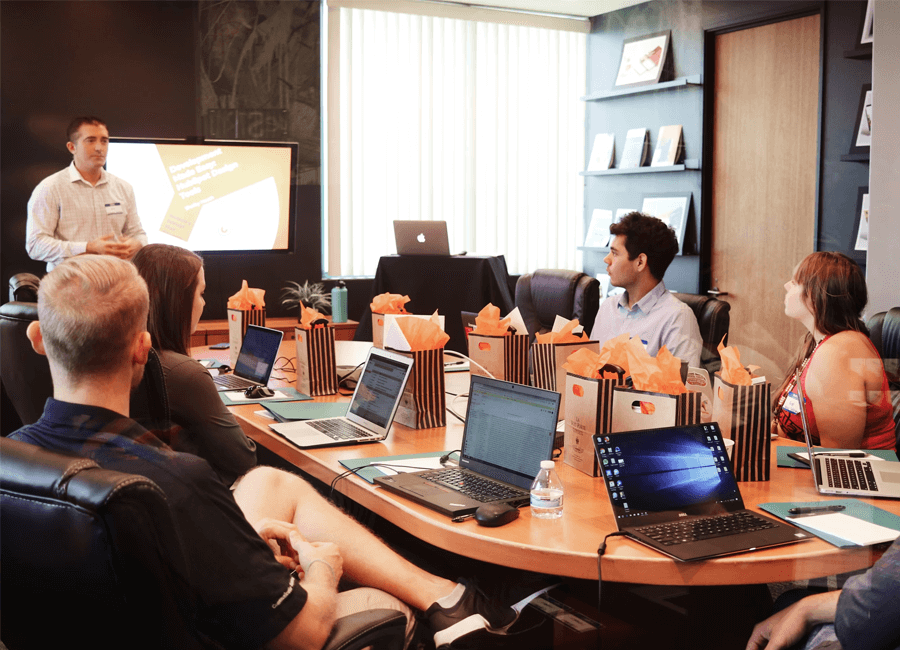What does it mean to be a successful insights team? This eminent question that can lead to a lot of success within the insights industry, inspiring insight teams to work towards becoming the best insights team possible and boosting the impact of insights within their organisation.
Insight teams face a number of challenges throughout all stages of the research experience that make it can be hard to work at maximum efficiency. With some teams fighting for funding, and others struggling to prioritise research projects out of the numerous requests, each insight teams’ experience is different, and thus it can be hard to become that winning insight team by trying to emulate the experience of other teams.
So how is it that insight teams become the best versions of themselves?
Influence and Efficiency
The goals of a winning insight team are centred on efficiency and influence. Once insight teams achieve true efficiency within their research, communication, and personal processes, then they will be able to generate reliable, high-quality insights in good time or even in real-time with no noticeable effort.
Influencing decisions across an organisation is a challenge all insight teams struggle with, and the answer is usually a tailored solution depending on the level of influence they exert already and the engagement of stakeholders in market research. But the influence of both the insights and insight team can be better worked on once the efficiency side of the equation is either gaining momentum or is actually nailed down. Once the ball is rolling on the efficiency side, the reputation for generating truly actionable insights that reliably inform decisions everywhere will not go unnoticed within stakeholder circles, and this, in turn, will help start the ball rolling when it comes to extending the influence of the insight team.
A winning insights team is both efficient and influential at the same time, with one aspect perpetuating the influence of the other in a positive spiral that leads to insight team success. But how exactly can we achieve this? With spot-on communications, better stakeholder engagement, and proactive solution-based actions between the insights team and stakeholders.
The Importance of Communication
Communication is an insight team’s ultimate weapon when it comes to maximising both efficiency and influence within their stakeholders’ organisation. That’s why it’s imperative that insight professionals learn to communicate effectively with senior leaders.
This communication needs to happen consistently and constantly, both insight and out of research projects, in order to maintain a connection between insight teams and the rest of the business. The communication tactics insight teams implement will heavily depend on the stakeholders’ preferred style and frequency of communication; within the research experience, it comes down to whether they’re taking a more hands-on approach and collaborating with the insight team or simply requesting the research be done and receiving the insights afterwards.
When it comes to reporting formats, there are a number of tactics insight teams can use to stay in touch with stakeholders, building a great rapport, and better distribute insights to a wider audience. This insight activation stage of the process is where stakeholders take the insights and the reigns, activating the insights through better-informed decisions, but that doesn’t mean insight teams have no control over this stage; insight teams are able to use many different communication methods to help stakeholders drive action.
Firing Up Stakeholder Engagement
Communication is a great way to engage stakeholders in market research from start to finish. So how can researchers adapt their communication styles and channels to the needs of business leaders to start and maintain the engagement in market research?
For some, regular newsletters updating the wider company on the progress and insights generation might be the way to go; or insight teams could take advantage of in-person workshops/forums so stakeholders can ask any questions to the insight team, or even a permanent, dedicated communication channel directly from insight teams to other teams to streamline communication channels.
Winning insight teams will understand that ultimately, the best way to go about figuring out the best channels for you is simply through trial and error, and to use a myriad of different channels to make sure they have the best chance of communicating with the widest audience possible.
But figuring out communication channels is only the start when encouraging stakeholders to engage in market research. For some, true engagement comes from immersing themselves in the research experience, and the best way to immerse stakeholders in market research would be through collaboration.
There are currently numerous debates on whether to employ collaboration or to use curation when it comes to stakeholders, with some insight professionals arguing that stakeholders without the necessary knowledge and experience will mess with the integrity of the experience rather than boost it with the contextual knowledge only stakeholders retain. But it could also be argued that the context stakeholders understand boosts the research experience more than they could interfere with the integrity of the experience.
Which path insight teams choose to take will depend on their individual circumstances and the maturity (knowledge and experience) and both the stakeholder and insight teams; but it's worth remembering that mixing the two paths is also an option to mitigate any consequences of choosing one over the other, and gaining the benefits of both paths.
| Tweet This | |
| Each insight team's journey to success will be mired with similar challenges, but will need different tactics in place to overcome them. So how exactly do insight teams win? |
Successful insight teams understand the value of stakeholder feedback, their research experience, the insights generated, and most importantly on what the insights were used for and what change they have incited. Innovation doesn’t go unnoticed, and if insights were a differentiating factor that incited that innovation, then the stakeholder organisation will notice that too, spurring more stakeholders to take notice and engage in the research experience. This in turn will help drive insight teams to success, with more research and more importance being placed on the team that powers innovative change.
Proactive Solutions to Unexpected Problems
Each insight team’s journey to success will be mired with similar challenges and obstacles, but will need different tactics in place to avoid them – this is why it’s so hard to become a winning insight team overnight. It takes a while for each insight team to find their groove and the strategies that will shoot them into relative superstardom.
While communication and stakeholder engagement are pretty obvious tracks to becoming a winning insight team, the strategies we currently have in place don’t always pan out as hoped. So, the last piece of advice to give is to always have the answer, or at very least know how to get the answer for your stakeholder – but don’t forget to include stakeholders in the solution-finding process to make sure they’re engaged and see you as the solution rather than the problem. This will ensure that, while you’re still aiming to be seen as an asset, the insight team isn’t seen as a cost-centre, a view detrimental to the success of an insight team.


















